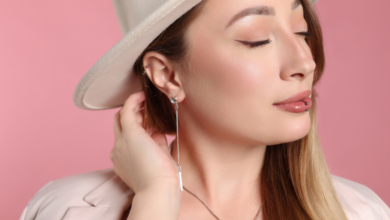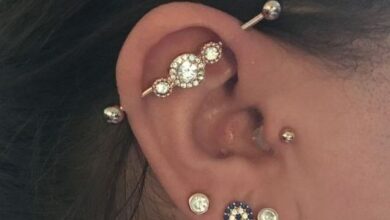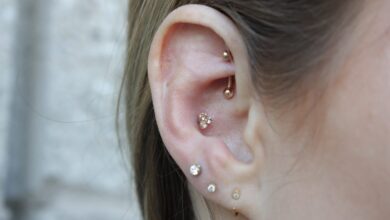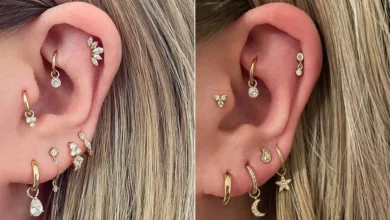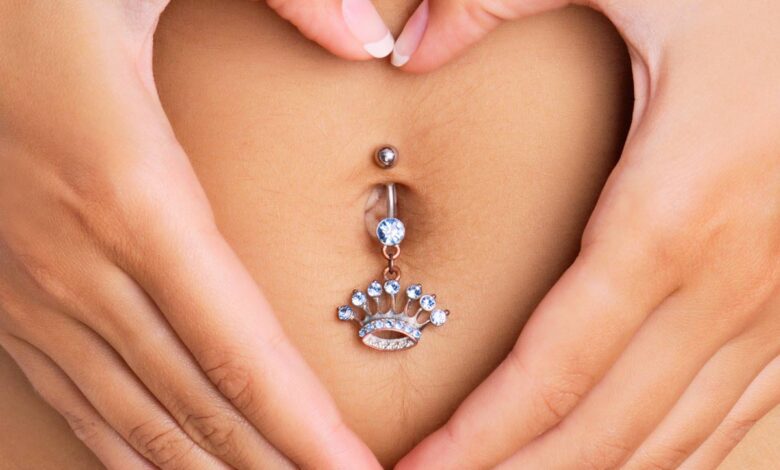
Get ready to embark on a journey through the fascinating world of belly button piercings at stylish.ae. From the latest trends to the most popular jewelry options, this article has everything you need to know about this stylish form of body art. Whether you’re considering getting a belly button piercing or just curious about the process, we’ve got you covered. So sit back, relax, and let us take you on a captivating exploration of navel tales.

Choosing a Belly Button Piercing
Consider Your Anatomy
When it comes to choosing a belly button piercing, it’s important to consider your anatomy. Not all belly buttons are suitable for piercing, and some may be more prone to complications. Take a look at your belly button to determine its shape and depth. The most common belly button shapes are vertical, horizontal, and oval. Vertical and oval-shaped belly buttons are typically the easiest to pierce, while horizontal ones may require more care due to the higher risk of the jewelry being caught on clothing. Additionally, the depth of your belly button can affect the type of jewelry that will work best for you. Some individuals have shallow belly buttons, which may limit their options when it comes to jewelry styles. By considering your anatomy, you can ensure that you choose a belly button piercing that is suitable for you.
Choose the Right Jewelry
Selecting the right jewelry for your belly button piercing is crucial for both aesthetics and comfort. There are various types of jewelry available, including barbells, captive bead rings, and curved barbells. The most common choice for initial piercings is a straight barbell, as it allows for proper healing and reduces the risk of complications. When choosing the material for your jewelry, opt for options that are hypoallergenic, such as surgical stainless steel, titanium, or 14k gold. Avoid using low-quality materials that may cause allergic reactions or skin irritations. It’s also important to consider the length and gauge of the jewelry. Your piercer will guide you in selecting the appropriate measurements based on your anatomy and the initial swelling that occurs after the piercing. By choosing the right jewelry, you can ensure a comfortable and aesthetically pleasing belly button piercing.

Seek Professional Advice
Before getting a belly button piercing, it’s essential to seek professional advice. While it may be tempting to try a DIY approach or go to an inexperienced piercer to save money, it’s not worth the potential risks and complications that can arise. Research reputable piercing studios in your area and read reviews from previous clients. Look for piercers who have a strong reputation for their expertise, cleanliness, and proper procedures. Once you find a reliable studio, schedule a consultation appointment to discuss your belly button piercing. A professional piercer will thoroughly assess your anatomy, answer any questions you may have, and provide personalized advice based on your individual needs. They will also provide aftercare instructions and ensure you have a clear understanding of what to expect during and after the piercing process.
Preparing for a Belly Button Piercing
Research Piercing Studios
Before getting a belly piercing, it’s crucial to research piercing studios in your area. Take the time to read reviews, check their cleanliness standards, and inquire about their piercing techniques. Look for studios that prioritize hygiene, use sterile equipment, and follow strict safety protocols. The studio should provide a clean and comfortable environment to ensure a positive piercing experience. Additionally, check if the piercers are licensed and experienced in performing belly piercings. Remember, the quality of the studio and piercer will significantly impact the outcome of your piercing, so it’s important to choose wisely.
Understand the Procedure
Understanding the belly button piercing procedure is essential for a smooth and successful experience. During the piercing process, the piercer will first clean and disinfect the area around your belly button. They will then mark the placement of the piercing using a sterile surgical pen. The piercer will use either a hollow needle or a piercing gun to create the hole, depending on their preferred technique and your anatomy. After the piercing is done, the jewelry will be inserted into the hole, and any excess materials will be trimmed. It’s important to note that the procedure itself is relatively quick, taking only a few minutes to complete. However, understanding the steps involved can help ease any anxiety or uncertainty you may have before getting your belly button pierced.
Follow Pre-Piercing Guidelines
To ensure a successful belly button piercing and minimize the risk of complications, it’s important to follow the pre-piercing guidelines provided by your piercer. These guidelines typically include avoiding alcohol, blood-thinning medications, and aspirin before the piercing to prevent excessive bleeding. It’s also recommended to stay hydrated, eat a balanced meal, and get a good night’s sleep before your appointment to promote overall well-being and reduce any potential discomfort. Additionally, it’s crucial to maintain proper hygiene by cleaning the area around your belly before the piercing. Follow your piercer’s instructions regarding any specific cleaning regimen or preparations to ensure optimal conditions for the piercing process.
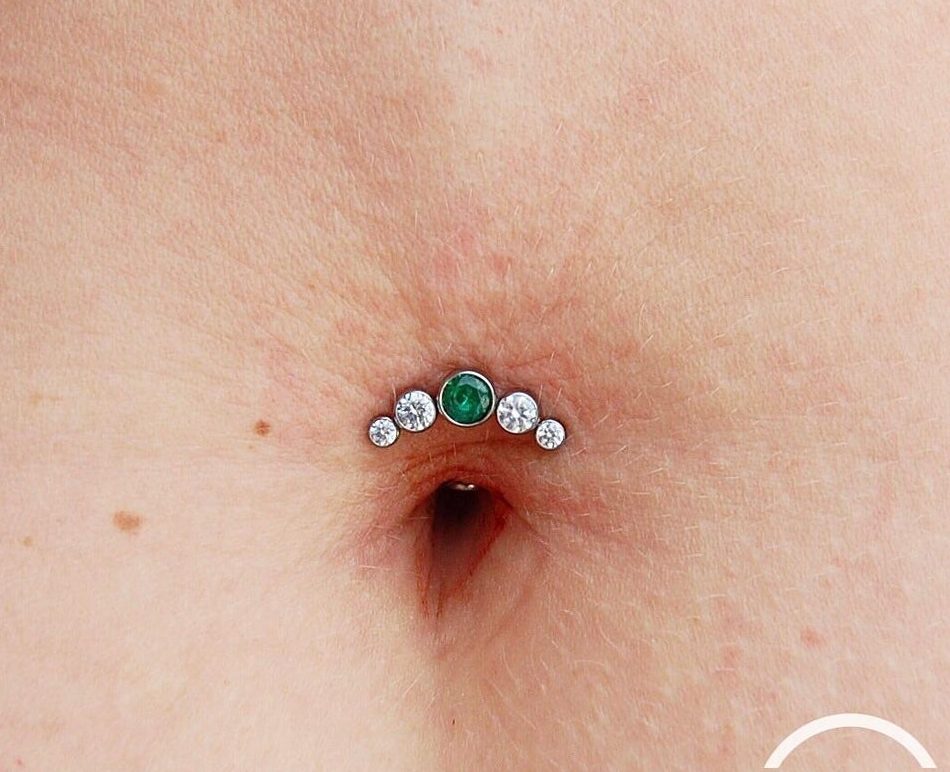
The Piercing Process
Sanitization and Marking
Before starting the piercing process, the piercer will ensure that proper sanitization protocols are followed. This includes thoroughly cleaning the work area, wearing sterile gloves, and using sterile instruments. The piercer will also mark the exact placement of the piercing using a sterile surgical pen. By marking the placement, the piercer ensures that the piercing is centered and aligned according to your anatomy.
Needle Piercing vs. Gun Piercing
When it comes to belly button piercings, there is an ongoing debate between needle piercing and gun piercing. Needle piercing is generally considered the preferred method by professional piercers. A hollow needle is used to create a clean incision, minimizing tissue damage and reducing the risk of trauma to the area. Gun piercing, on the other hand, involves using a piercing gun to forcefully push the jewelry through the skin. This method is not recommended by most professional piercers as it can cause excessive tissue trauma, delayed healing, and a higher risk of complications. It’s best to opt for needle piercing to ensure a safe and effective belly piercing.
Jewelry Insertion
Once the piercing hole is created, the piercer will insert the chosen jewelry into the freshly pierced area. This step requires precision and care to avoid any unnecessary movement or trauma to the piercing. The piercer will secure the jewelry and ensure it is positioned correctly. Depending on your anatomy and the initial swelling, the jewelry length may be slightly longer to accommodate for any potential changes during the healing process. Your piercer will provide aftercare instructions and recommendations on when it’s safe to change to a shorter, more fitted jewelry.
Aftercare Tips for Belly Piercings
Cleaning the Piercing
Proper cleaning is crucial for the healing and maintenance of your belly button piercing. Your piercer will provide specific aftercare instructions tailored to your individual needs, but here are some general guidelines to follow. Clean the piercing twice a day using a saline solution or a mild, fragrance-free soap. Gently clean around the jewelry, removing any crust or discharge that may have accumulated. Avoid using harsh or alcohol-based products, as they can irritate the piercing. Pat the area dry with a clean paper towel or a disposable, lint-free cloth. Avoid using towels or materials that may carry bacteria, as this can increase the risk of infection.
Avoiding Irritants and Trauma
To promote proper healing, it’s important to avoid irritants and minimize trauma to the piercing. Avoid wearing tight clothing or accessories that may rub against or irritate the piercing site. Be cautious when participating in physical activities, especially those that involve excessive movement or contact with the piercing. Additionally, avoid swimming in bodies of water, such as pools, hot tubs, or natural bodies of water, until your piercer gives you the green light. These environments can introduce bacteria and prolong the healing process.
Not Removing the Jewelry Early
It’s crucial to leave your belly button jewelry in place until the piercing has fully healed. Removing the jewelry too early can disrupt the healing process, leading to complications and potential closure of the piercing hole. Follow your piercer’s instructions on the recommended healing time for your specific piercing. On average, belly piercings take around 6-12 months to fully heal. During this time, it’s essential to be patient and resist the temptation to change or remove the jewelry prematurely.
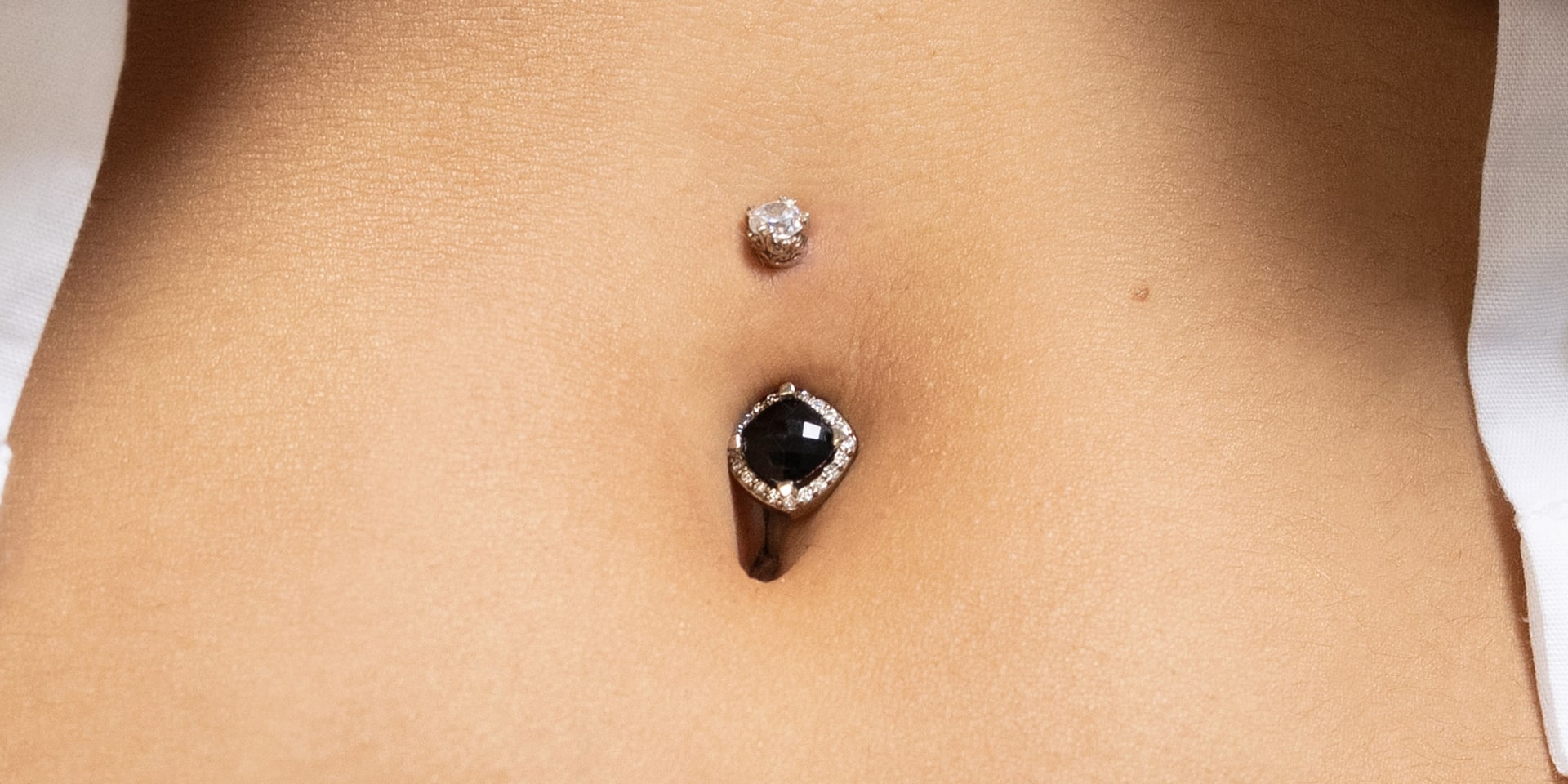
Common Problems and How to Deal with Them
Infection
Infections can occur in belly button piercings if proper aftercare is not followed. Signs of an infection include redness, swelling, pain, and discharge that is thick, green, or foul-smelling. If you suspect an infection, seek professional advice from your piercer or a healthcare provider. Treatment typically involves topical or oral antibiotics to clear the infection. It’s important to address infections promptly to prevent further complications.
Migration and Rejection
Migration and rejection can occur when the body rejects the jewelry or when the piercing moves from its original placement. Signs of migration or rejection include the jewelry becoming noticeably shallower or angled differently as the piercing migrates outwards. If you notice these signs, consult with your piercer as soon as possible. They may recommend removing the jewelry to prevent further complications. In some cases, the piercing can be repierced once it has fully healed to achieve a successful result.
Keloids and Hypertrophic Scars
Keloids and hypertrophic scars are raised, thickened areas of scar tissue that can form around the piercing site. Some individuals may be more prone to developing keloids or hypertrophic scars due to their genetic predisposition. To prevent these complications, follow your piercer’s aftercare instructions and avoid any trauma to the piercing. If keloids or hypertrophic scars develop, consult with a healthcare professional or a dermatologist for appropriate treatment options, which may include corticosteroid injections or silicone gel sheets.
Changing Jewelry and Upgrading
Timing for Jewelry Change
Changing jewelry too soon can disrupt the healing process and increase the risk of complications. It’s important to wait until the piercing is fully healed before attempting to change the jewelry. Your piercer will provide guidance on when it’s safe to change, but as a general rule, most belly button piercings require a healing period of 6-12 months. Once the piercing is fully healed, you can explore different jewelry options and change your belly button jewelry according to your preferences.
Choosing the Right Size and Material
When changing your belly button jewelry, it’s important to choose the right size and material to ensure a comfortable fit and minimize the risk of complications. The size of the jewelry depends on your anatomy and personal preferences. Choose a length and gauge that suits your belly shape and allows for proper movement. Additionally, opt for hypoallergenic materials such as surgical stainless steel, titanium, or 14k gold. These materials are less likely to cause allergic reactions or irritations, ensuring a safe and comfortable wearing experience.
Gradually Upsizing
If you decide to upsize your belly jewelry, it’s essential to do so gradually. Upsizing too quickly can strain the piercing and increase the risk of complications such as tearing or migration. Gradual upsizing allows the piercing to adjust to the new size and promotes optimal healing. Consult with your piercer for guidance on the appropriate timing and sizing for your personal journey of jewelry change and upgrades.
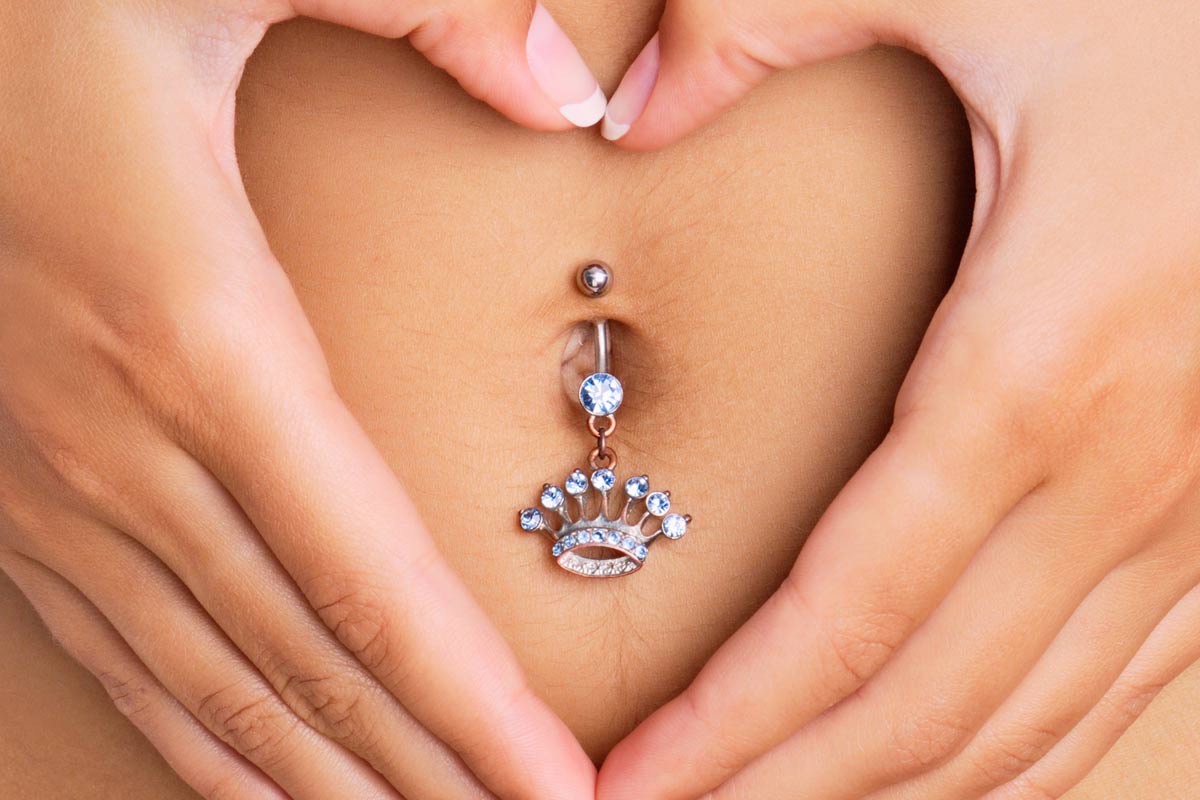
Experiencing Pain and Discomfort
Common Discomforts and Solutions
It’s common to experience some pain and discomfort during the healing process of a belly button piercing. This can include mild soreness, tenderness, and sensitivity around the piercing site. To alleviate these discomforts, apply a cold compress or take over-the-counter pain relievers, following the instructions provided. Avoid excessive touching, twisting, or moving the jewelry, as this can exacerbate the discomfort and prolong the healing process.
Pain Management Techniques
To manage pain during the healing process of your belly button piercing, consider incorporating pain management techniques into your routine. This can include taking warm showers to reduce inflammation and promote relaxation. Gentle massages around the piercing site can also help alleviate tension and discomfort. If you experience persistent or severe pain that doesn’t subside with these techniques, it’s important to consult with your piercer or a healthcare professional for further advice.
When to Seek Professional Help
While some pain and discomfort are expected throughout the healing process, there are instances where professional help should be sought. If you notice any signs of infection, severe swelling, excessive bleeding, or intense pain that doesn’t improve with time, it’s important to consult with your piercer or a healthcare professional as soon as possible. Prompt attention and guidance can help prevent further complications and ensure proper healing.
Frequently Asked Questions
How Long Does It Take to Heal?
The healing time for a belly button piercing varies from person to person. On average, belly button piercings take around 6-12 months to fully heal. However, keep in mind that healing times can be influenced by factors such as individual anatomy, aftercare, and lifestyle choices. It’s crucial to be patient and follow your piercer’s aftercare instructions to promote optimal healing.
Can I Go Swimming with a Belly Button Piercing?
It’s generally recommended to avoid swimming in bodies of water, such as pools, hot tubs, or natural bodies of water, until your belly button piercing has fully healed. These environments can introduce bacteria and prolong the healing process. If you must swim before your piercing is fully healed, consult with your piercer for specific recommendations and take proper precautions, such as cleaning the piercing immediately after swimming.
Can I Get a Belly Button Piercing If I’m Pregnant?
Pregnancy can affect the healing process of a belly button piercing due to hormonal changes and changes in the shape and size of the belly. Some individuals may experience increased sensitivity or discomfort during pregnancy, making it more challenging to care for the piercing. It’s crucial to consult with your healthcare provider and your piercer to discuss the potential risks and benefits of getting a belly button piercing while pregnant. They can provide personalized advice based on your individual circumstances.
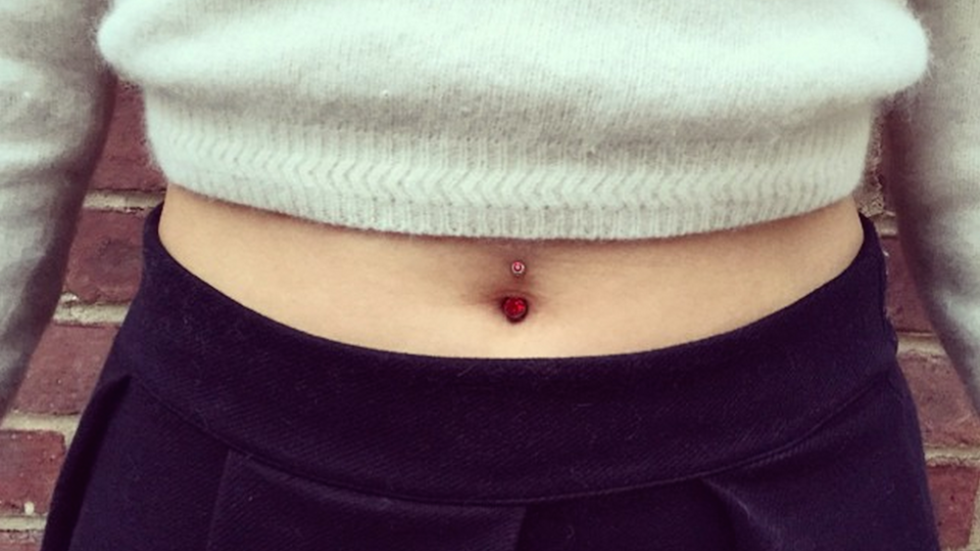
The Pros and Cons of Belly Button Piercings
Pros of Belly Button Piercings
Belly button piercings have become a popular form of self-expression and adornment. Some of the pros of getting a belly button piercing include:
- Aesthetics: Belly button piercings can enhance the appearance of your midsection, adding a touch of uniqueness and style.
- Versatility: There are various types of jewelry available for belly button piercings, allowing you to personalize and switch up your look whenever you desire.
- Self-confidence: For many individuals, having a belly button piercing can boost self-confidence and body positivity.
Cons of Belly Button Piercings
While belly button piercings have many advantages, it’s important to consider the potential drawbacks as well. Some of the cons include:
- Healing time: Belly button piercings require a considerable amount of time to heal, ranging from 6-12 months on average. This prolonged healing period requires patience and proper aftercare.
- Risk of complications: Like any piercing, there is a risk of complications such as infection, migration, and rejection. Following proper aftercare and seeking professional advice can minimize these risks.
- Sensitivity and discomfort: During the healing process, it’s common to experience sensitivity and discomfort around the piercing site. This can make certain activities or clothing choices more challenging for a period of time.
Unique Belly Button Piercing Ideas
Double Belly Button Piercing
Double belly button piercings involve having two separate piercings in close proximity or aligned vertically or horizontally. This style offers a unique and symmetrical look, allowing for individualized jewelry combinations and personal expression. However, it’s important to consider the anatomy of your belly button and the suitability of this style before opting for a double piercing. Consult with a professional piercer to determine if double belly button piercings are feasible for you.
Dangle Belly Button Piercing
Dangle belly button piercings feature jewelry that hangs down from the belly button, creating a captivating and eye-catching effect. These piercings often use barbells with decorative charms or chains, adding movement and elegance to your belly button area. Dangle belly button piercings are a great option for those looking to make a bold fashion statement or to accentuate their midsection with a touch of glamour.
Reverse Belly Button Piercing
Reverse belly button piercings, also known as top-down or surface belly button piercings, involve piercing the upper part of the belly button instead of the traditional lower navel area. This style creates a unique and different look, giving the illusion of a floating or elevated belly button piercing. Reverse belly button piercings can be a great option for individuals seeking a more unconventional and edgy piercing style.
In conclusion, choosing a belly button piercing involves considering your anatomy, selecting the right jewelry, and seeking professional advice. Preparing for the piercing includes researching piercing studios, understanding the procedure, and following pre-piercing guidelines. The piercing process involves sanitization and marking, choosing between needle piercing and gun piercing, and jewelry insertion. Aftercare tips include cleaning the piercing, avoiding irritants and trauma, and not removing the jewelry early. There are potential problems such as infection, migration and rejection, and keloids and hypertrophic scars, which can be dealt with through professional help.
Conclusion
When changing jewelry and upgrading, timing, choosing the right size and material, and gradual upsizing are important factors. Pain and discomfort can be managed through common discomforts and pain management techniques, but professional help should be sought if necessary. Frequently asked questions address healing time, swimming with a belly button piercing, and getting pierced while pregnant. Finally, the pros and cons of belly button piercings are discussed, along with unique piercing ideas such as double belly button piercings, dangle belly button piercings, and reverse belly button piercings. With careful consideration and proper aftercare, a belly button piercing can be a beautiful and enjoyable form of self-expression.
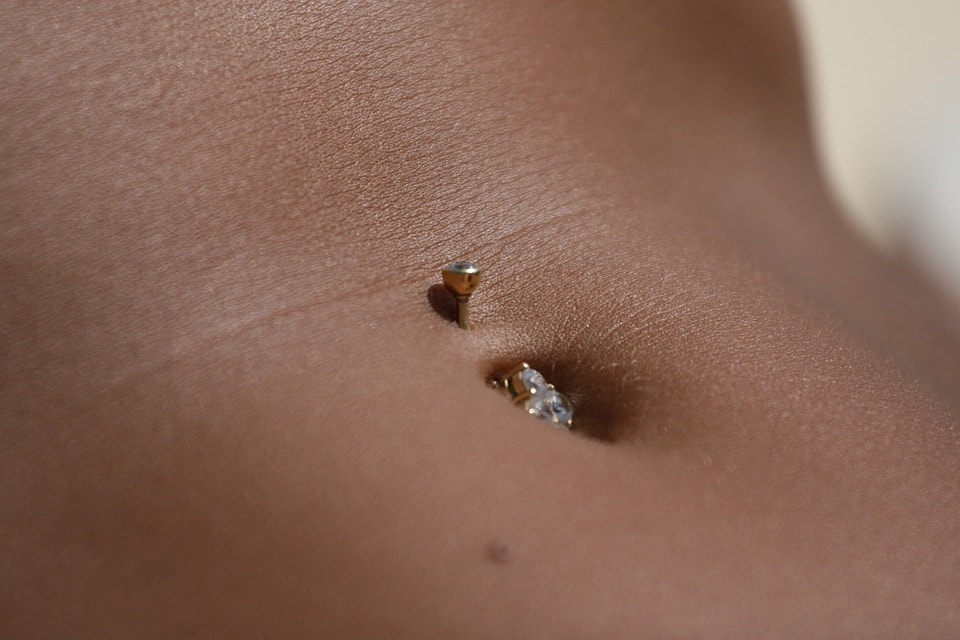
Choosing the Right Jewelry for Your Belly Button Piercing(Opens in a new browser tab)
Aftercare Affairs: Stylish.ae’s Essential Guide To Tattoo Healing(Opens in a new browser tab)
The Evolution Of Piercing: A Historical Perspective(Opens in a new browser tab)

